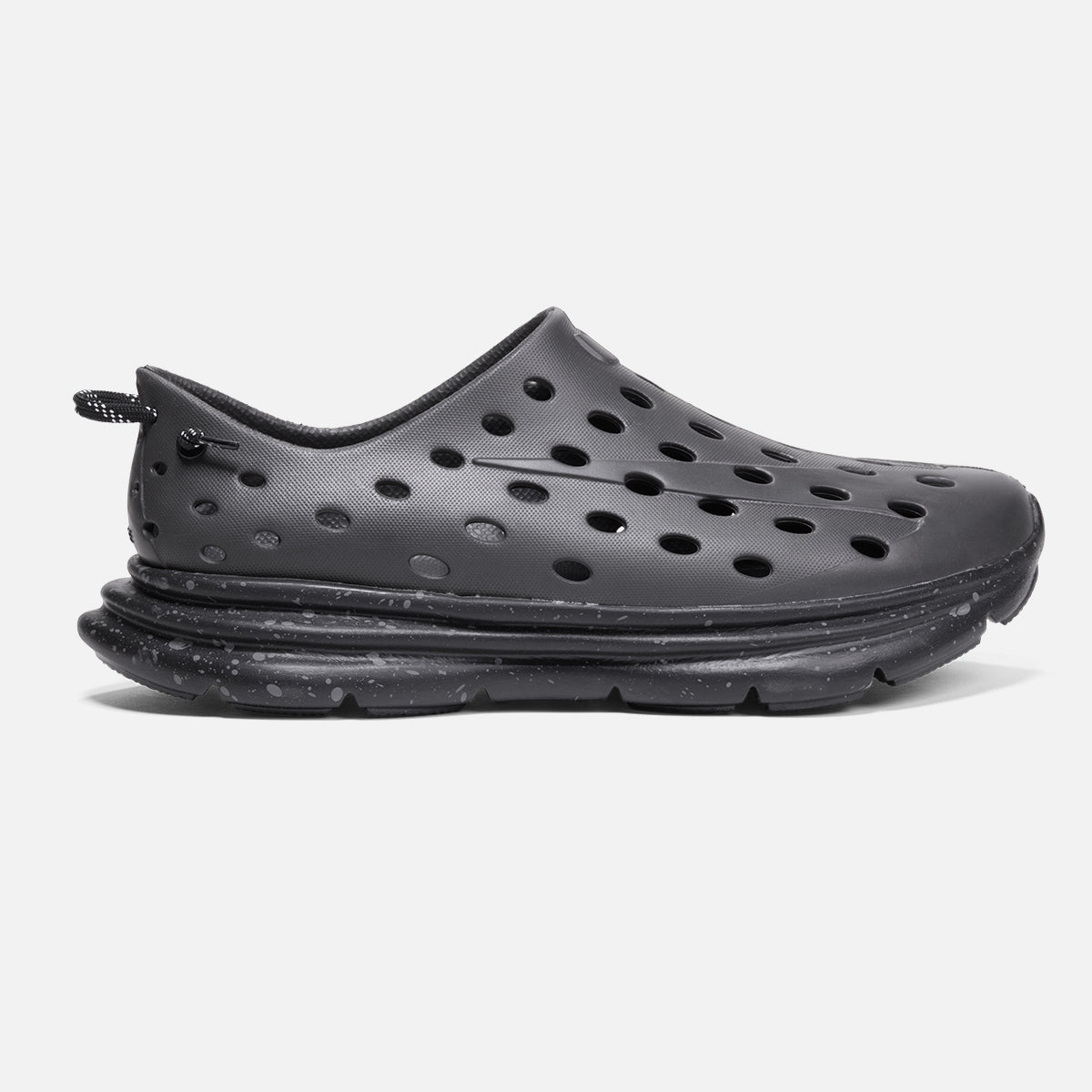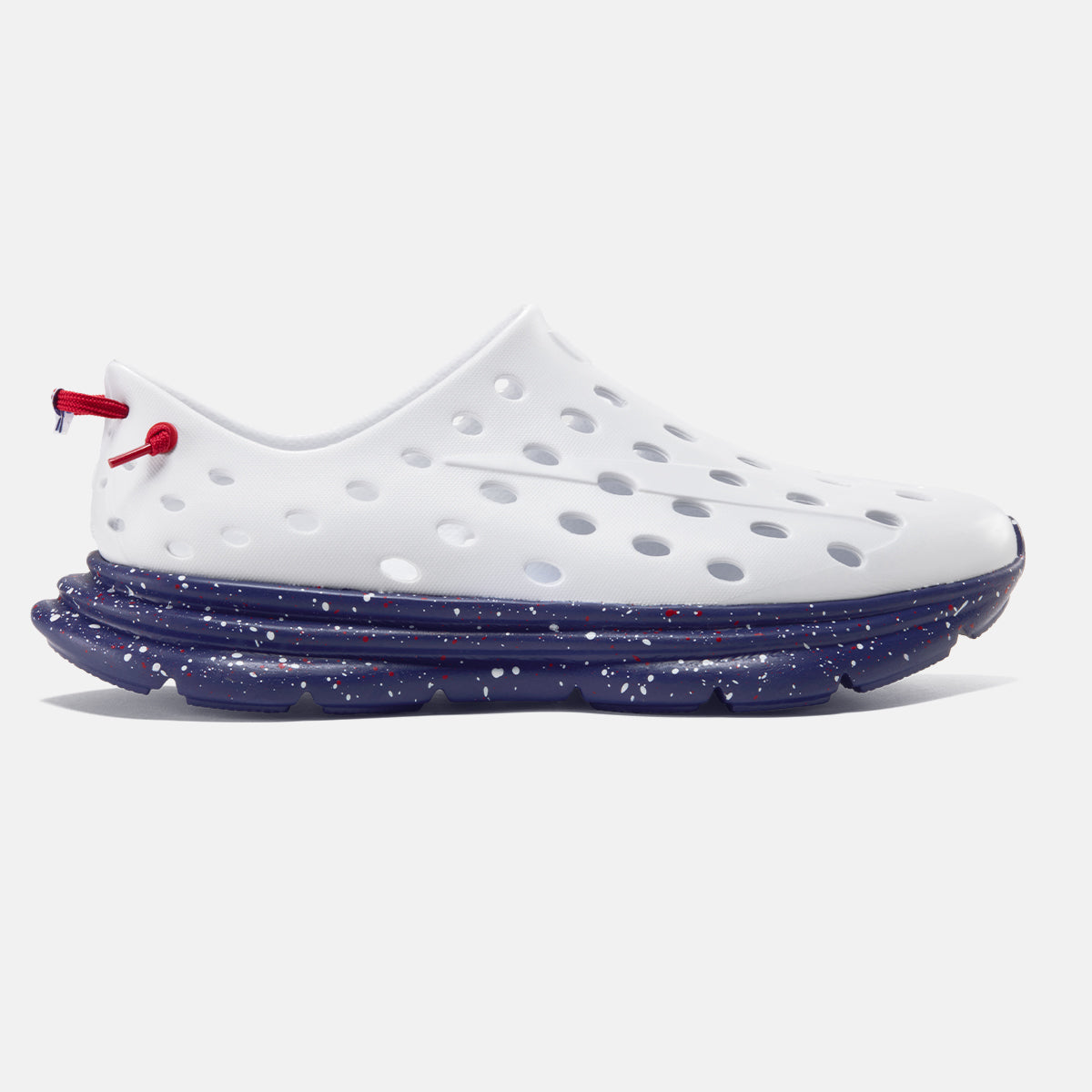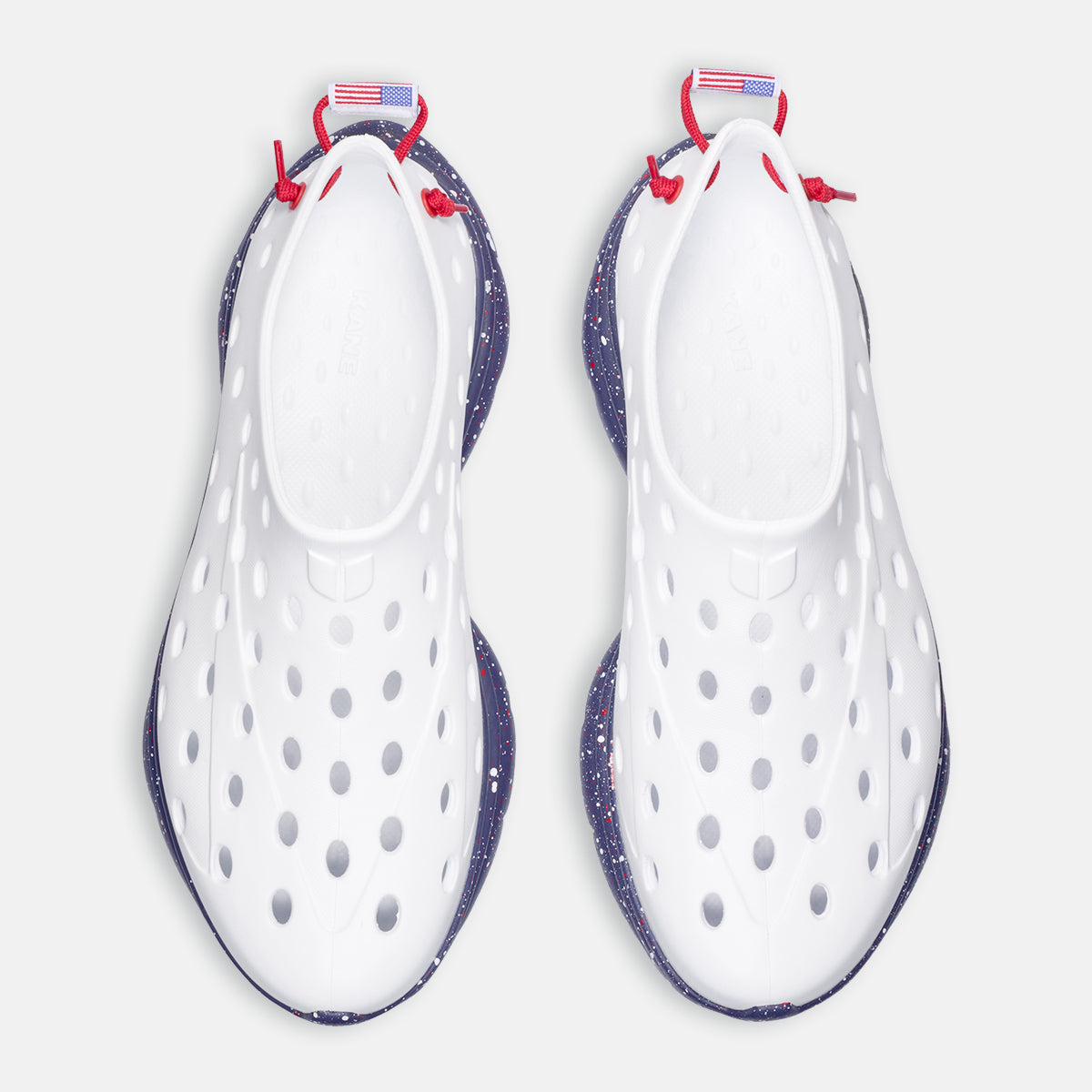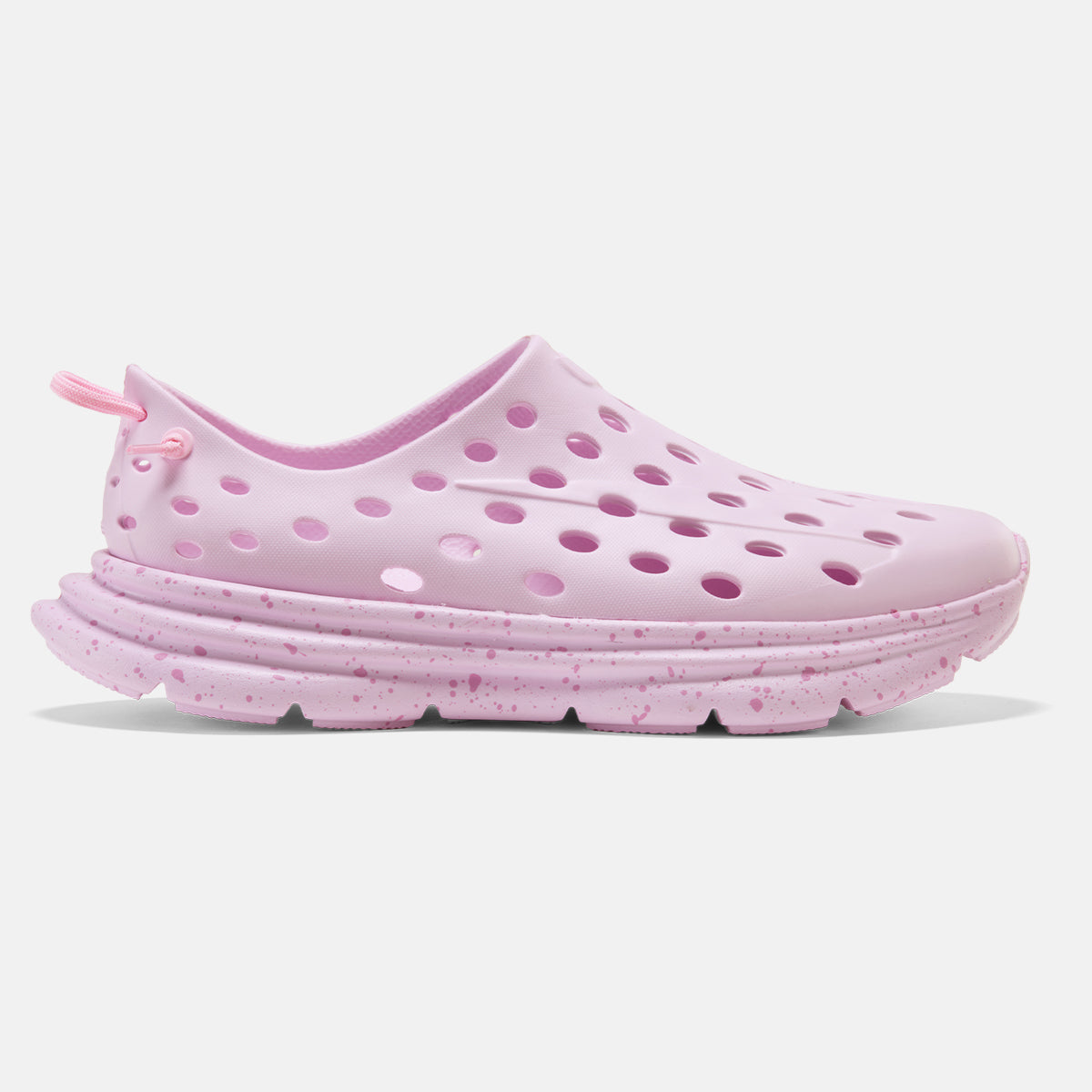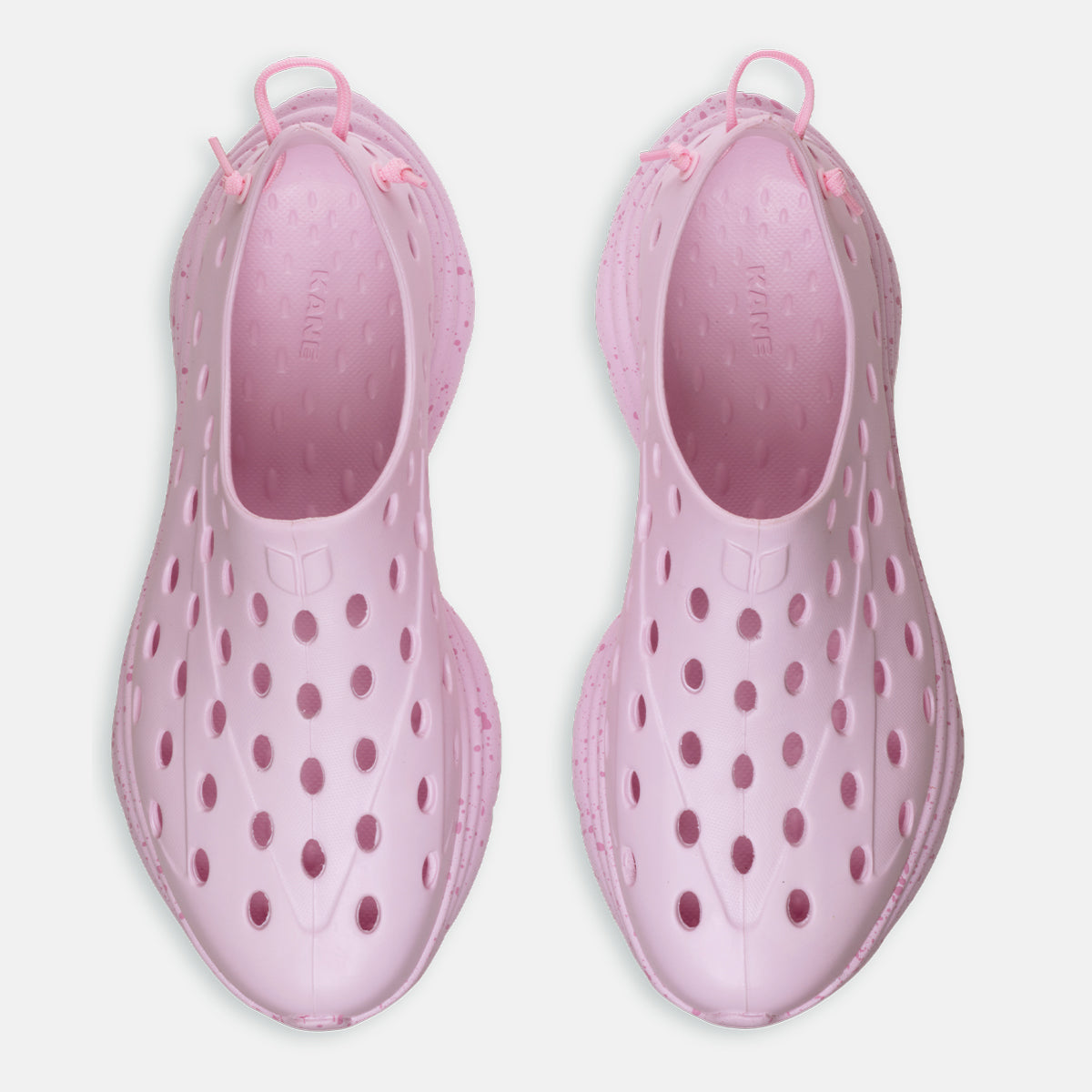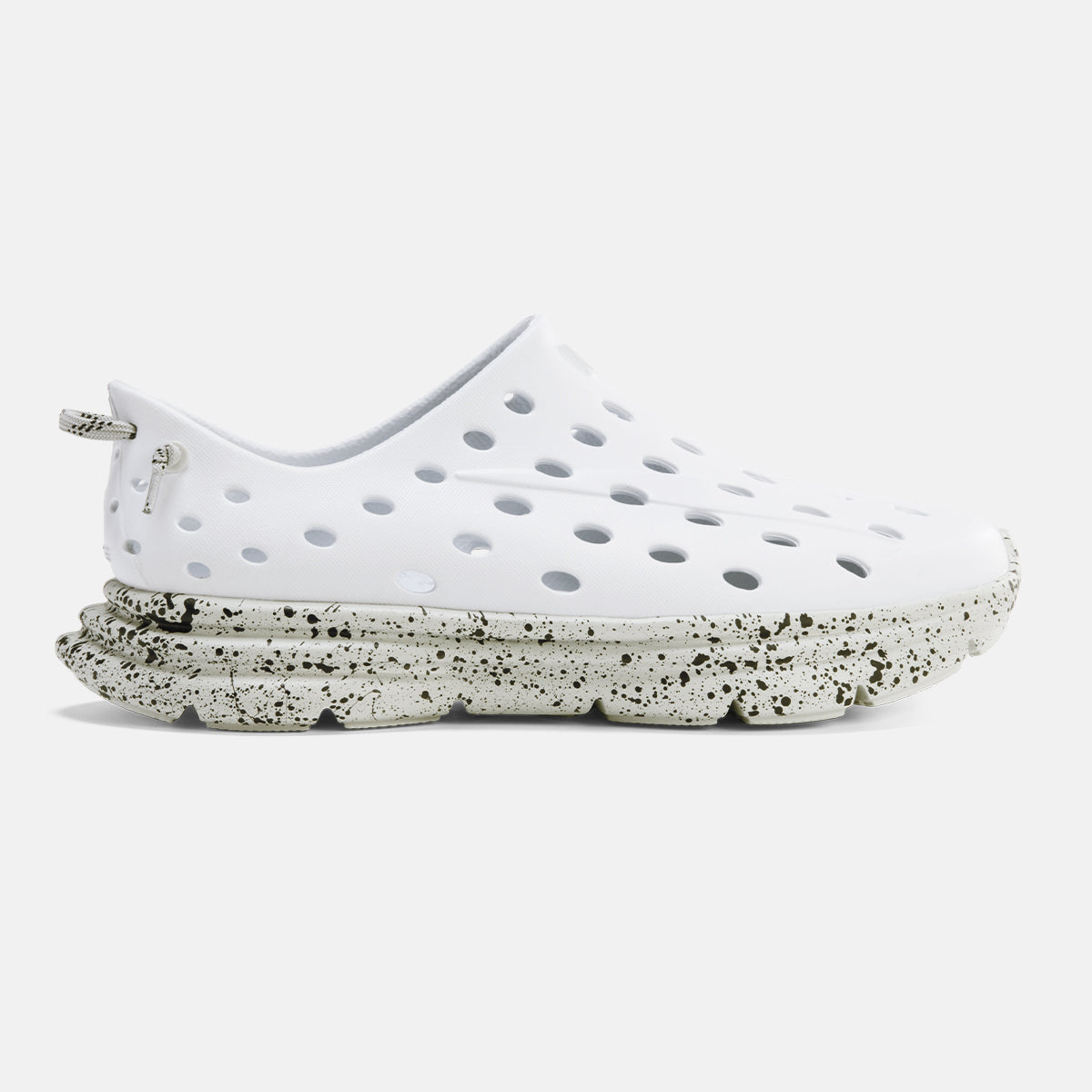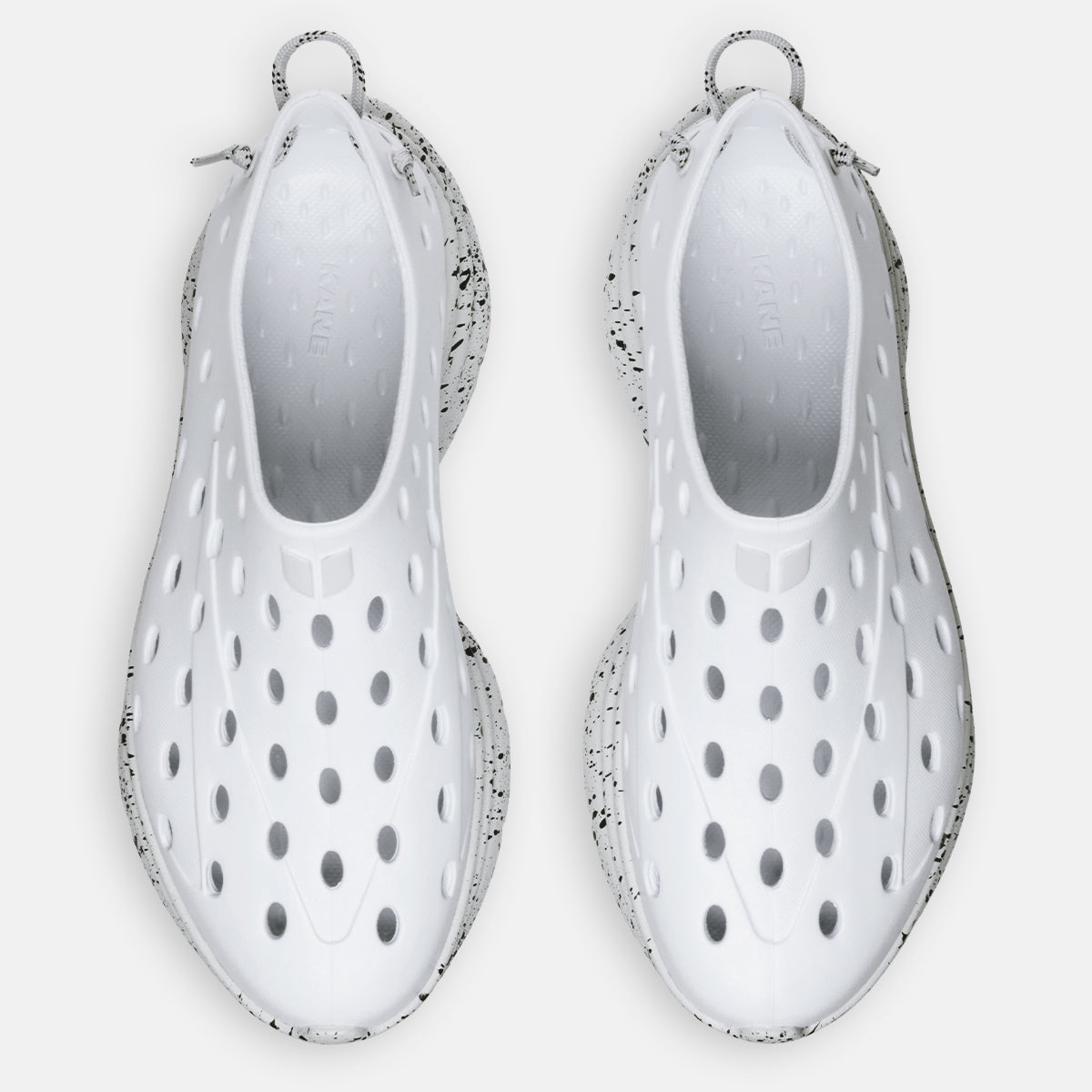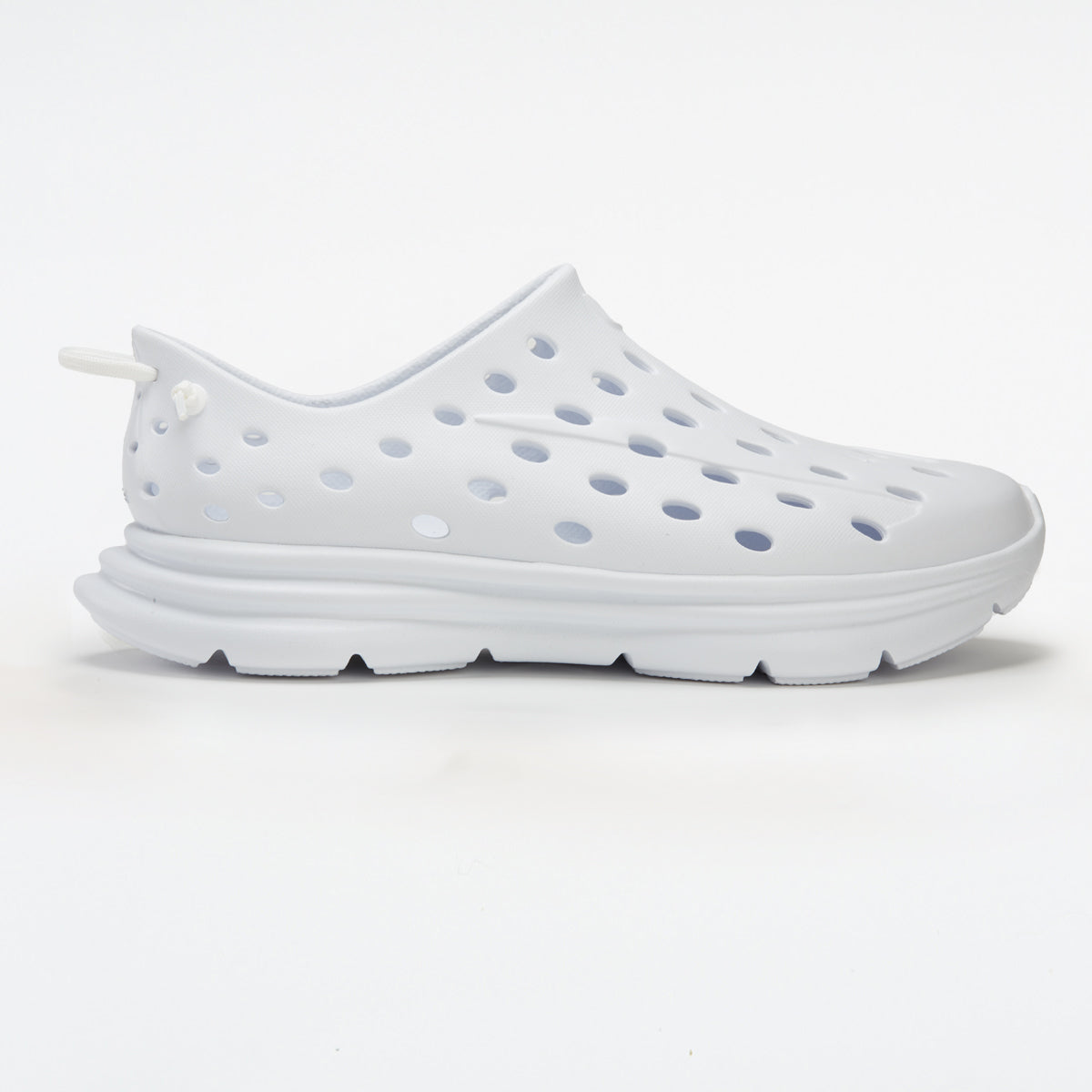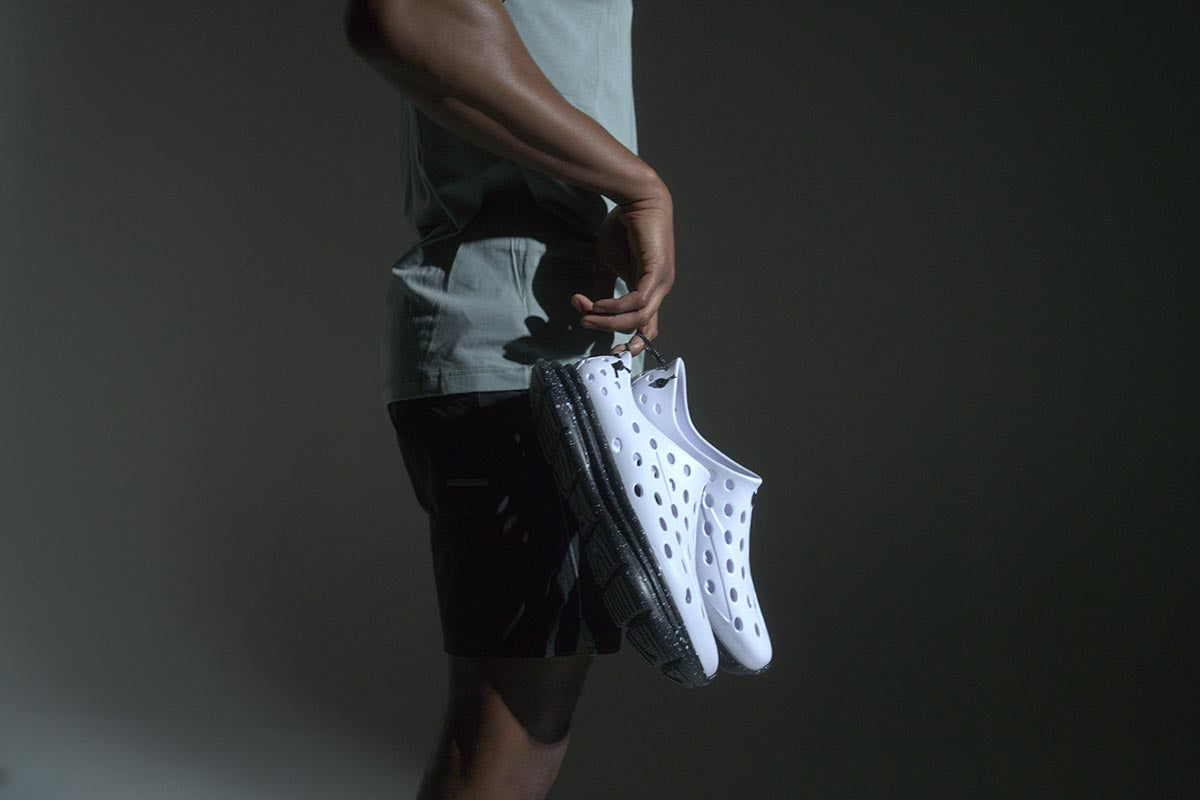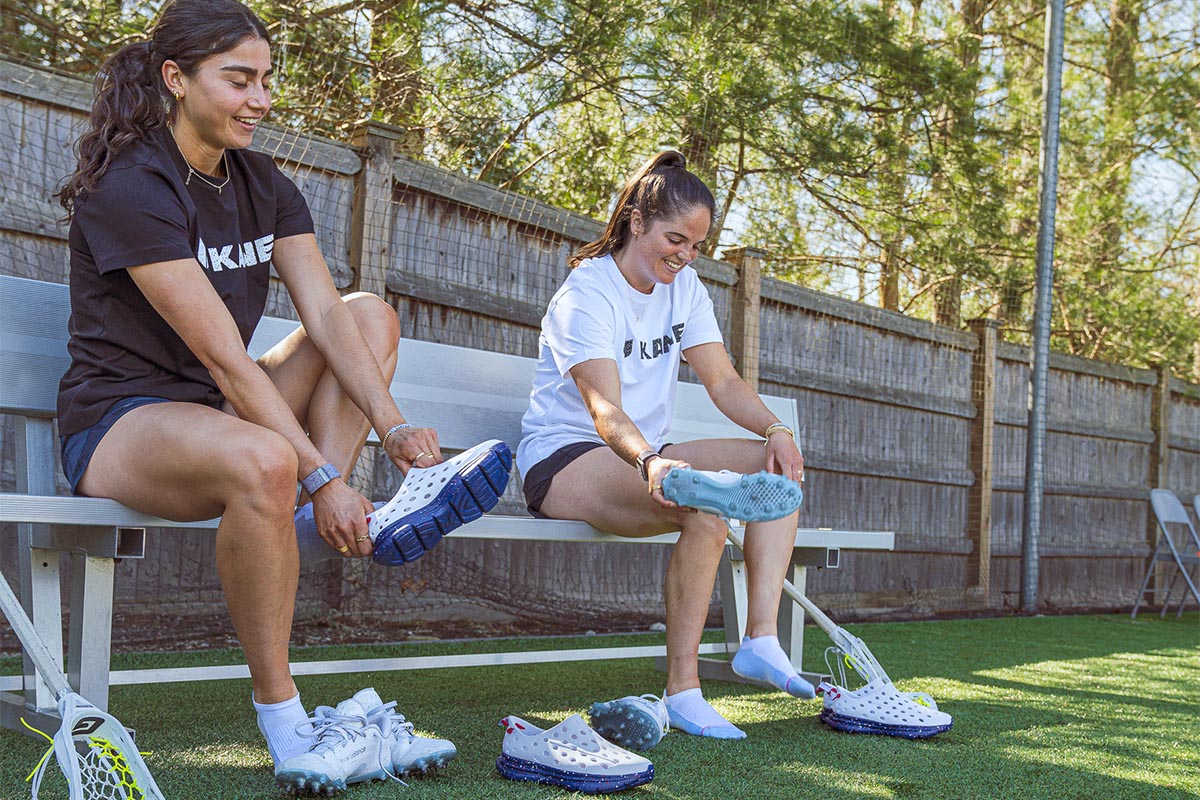Heel pain after running: Causes, treatment, and prevention strategies
Running is one of America's most popular forms of exercise, with about 50 million people hitting the pavement regularly. But with this popularity comes a common complaint: heel pain after running. Plantar fasciitis, a.k.a. "runner's heel," is one of the most commonly reported running-related injuries, according to a 2024 study in Medicine & Science in Sports & Exercise. So, if you experience heel pain after running, you're far from alone. Whether you're a weekend warrior or training for your next marathon, understanding why heel pain develops and how to address it can make the difference between a temporary setback and a chronic condition that sidelines your running goals. The good news? Most causes of heel pain respond well to proper treatment and prevention strategies.
Key takeaways
Plantar fasciitis is the leading cause of heel pain after running, but proper footwear and recovery techniques can significantly reduce symptoms. Early intervention with PEACE and LOVE protocols, appropriate rest, and supportive shoes prevents minor heel discomfort from becoming chronic injuries. Understanding your foot type, running biomechanics, and gradual training progression is essential for preventing long-term heel pain.
What causes heel pain after running?
Your feet absorb significant impact during running. Each step creates forces up to three times your body weight, traveling through your heel bone and up into the rest of your body. Your heel serves as your body's primary landing pad. The plantar fascia—a thick band of tissue connecting your heel bone to your toes—stretches and contracts with each step like a spring, supporting your arch and absorbing impact. When this system works smoothly, you can run long distances without discomfort. But when overuse, poor biomechanics, or worn-out shoes disrupt this balance, pain develops. Understanding these basics helps explain why runners are particularly vulnerable to heel pain.
Primary causes of heel pain after running
Several conditions cause heel pain after running, each with distinct symptoms and treatments. Recognizing your specific condition helps guide the most effective recovery approach.
Plantar fasciitis: The most common culprit
Plantar fasciitis is the most common cause of heel pain in runners, accounting for about 10% of running-related injuries. This condition occurs when your plantar fascia becomes inflamed from repetitive stress. The plantar fascia acts as your foot's shock absorber—a thick ligament that supports your arch and distributes running forces. When you develop plantar fasciitis, this tissue becomes inflamed where it attaches to your heel bone. Stabbing pain under the heel characterizes this condition, especially during your first steps in the morning or when you start walking after sitting for long periods. The pain typically improves with movement as tissues warm up, then returns after rest.
Common risk factors include:
- Sudden increases in running mileage or intensity
- Wearing running shoes that lack proper support
- Running on hard surfaces like concrete
- Having flat feet or high arches
- Tight calf muscles that limit ankle flexibility
- Weight gain that increases foot stress
Achilles tendonitis: Back-of-heel pain
Achilles tendonitis affects the largest tendon in your body: the Achilles tendon connecting your calf muscle to your heel bone. It creates pain and stiffness in the back of your heel, particularly after running. Tight calves contribute significantly to Achilles tendon problems. When your calf muscle lacks flexibility, it pulls excessively on the tendon during running, leading to inflammation and pain. Key symptoms include pain that worsens with activity, morning stiffness, swelling along the tendon, and thickening of the tendon tissue.
Heel spurs: Bony growths and inflammation
Heel spurs are calcium deposits that form bony projections on the heel bone. The spurs themselves rarely cause pain. Instead, inflammation of the surrounding tissues creates discomfort. These often develop alongside plantar fasciitis.
Other conditions
Other conditions include stress fractures in the heel bone (deep aching pain), nerve entrapment creating burning sensations, bursitis affecting fluid-filled sacs, and Sever's disease in young runners, usually aged nine to 14.
Immediate treatment: PEACE and LOVE protocols
Modern sports medicine has evolved beyond the traditional RICE approach. The evidence-based PEACE and LOVE protocol provides more comprehensive guidance for managing acute heel pain after running. PEACE focuses on early care: Protect your foot by avoiding activities that worsen pain but allow gentle, pain-free movement. Elevate to reduce swelling and improve blood flow. Avoid overusing anti-inflammatory medications and prolonged icing, as these can impede healing. Compress with a supportive wrap to control swelling. Educate yourself about the healing process and accept that some discomfort is normal during recovery. Seek immediate care for sharp pain that doesn't improve, burning pain, numbness, or tingling. LOVE promotes active rehabilitation: Load the foot gradually with weight-bearing activities as tolerated. Optimism matters—maintain a positive mindset to support healing. Vascularization through gentle aerobic activities like swimming or cycling encourages blood flow and tissue repair. Exercise progressively to restore foot strength, mobility, and balance.
Advanced treatment options
When self-care doesn't reduce pain after several weeks, professional treatments can help. Physical therapy addresses the root causes through targeted exercises that improve foot mechanics and correct muscular imbalances. Therapists design personalized programs to help restore normal function and prevent heel pain from returning. Custom orthotics can correct biomechanical issues that contribute to heel pain. These devices support your arch and improve foot alignment.
For severe cases, treatments include:
- Corticosteroid injections to break the inflammation cycle
- Extracorporeal shock wave therapy uses high-energy sound waves to stimulate healing
- Other treatments, like dry needling and manual therapy
- Surgery remains a last resort when conservative treatments fail after six to 12 months of consistent effort.
Prevention strategies for runners
Preventing heel pain is far easier than treating it once it develops. Smart training practices and proper equipment can help keep you running pain-free.
Proper footwear selection
Your running shoes represent your most important equipment for preventing heel pain. Replace them every 300-500 miles when they lose shock absorption and support capabilities. Match shoes to your foot type: Flat feet need motion control or stability shoes High arches benefit from neutral shoes with extra cushioning All runners need supportive shoes for daily wear to reduce cumulative stress Beyond your running shoes, what you wear between runs matters. Science-backed recovery footwear like KANE's Revive protects your plantar fascia, Achilles, and joints during the crucial hours when your body repairs training damage. Avoid walking barefoot on hard surfaces and skip unsupportive flip-flops or slippers.
Training modifications
Gradual progression allows tissues to adapt without becoming overwhelmed. Increase mileage gradually and incorporate other smart training habits, including:
- Running on softer surfaces when possible (trails, tracks, treadmills vs. concrete)
- Including adequate warm-up and cool-down periods
- Adding cross-training activities like swimming or cycling
- Avoiding dramatic surface changes too quickly
Biomechanical considerations
Your running form significantly influences heel pain risk. Consider professional gait analysis if you experience heel pain repeatedly. Many specialty running stores offer basic assessments during shoe fittings. Address tight calf muscles through regular stretching and strengthening exercises. These muscle imbalances commonly contribute to both plantar fasciitis and Achilles tendonitis.
Recovery and return-to-running guidelines
Returning to running after heel pain requires patience and systematic progression. Rushing back too quickly often leads to recurrent problems that become harder to resolve. Listen to your body's signals during recovery. Mild heel pain that improves with warm-up and doesn't worsen during activity may be acceptable. However, intense pain or symptoms that worsen with activity indicate you need more rest. Start with short, easy runs on softer surfaces Gradually increase duration before adding intensity or hills Monitor symptoms for several days after each run Scale back if pain, swelling, or stiffness increases Maintain stretching and strengthening routines even after symptoms resolve
Stretches for heel pain
Stretching exercises are crucial in treating and preventing heel pain. They improve flexibility and maintain healthy foot mechanics.
Key stretches include:
- Calf stretch: Stand arm's length from the wall, step the affected foot back, keep the heel down and lean forward (30 seconds, three times)
- Plantar fascia stretch: Sit with affected foot across opposite knee, pull toes back toward shin until you feel the stretch along the arch and plantar fascia (30 seconds, three times)
- Towel stretch: Sit with legs straight, loop the towel around the ball of the foot, and gently pull the toes toward you
- Rolling exercises: Use a tennis ball or a frozen water bottle under the foot for two to three minutes
- Perform these stretches two to three times daily, especially first thing in the morning when tissues are tightest.
How recovery footwear supports healing
Recovery doesn't stop when your run ends. What you wear during the other 23 hours of your day affects your recovery. While running shoes handle training impact, dedicated recovery footwear protects stressed tissues during everyday activities.
Proper support between runs fights fatigue, reduces injury risk, and helps you adapt to training faster. Unlike over-cushioned slides or flip-flops that allow your foot to collapse, recovery footwear with structured arch support and optimal heel-to-toe drop maintains proper biomechanics while your plantar fascia and Achilles repair themselves.
Wear recovery shoes for warm-ups, cool-downs, physical therapy appointments, and daily activities. Consistent support allows inflamed tissues to heal without setbacks.
Discover KANE: Science-backed recovery footwear
KANE created the recovery footwear category by combining sports podiatry principles with athlete feedback and sustainable materials. Developed with Dr. Daniel Geller, a foot and ankle surgeon specializing in sports injuries, KANE footwear integrates recovery-based orthopedic principles that directly address heel pain causes.
What makes KANE different:
- Structured support, not just cushioning: Dual-density construction with active arch support and heel capture reduces stress on your calves and Achilles, unlike over-cushioned slides, which can worsen fatigue.
- 9mm heel-to-toe drop: Provides extra shock absorption in the heel and superior arch support in the mid-foot. "We're getting this amazing heel-to-forefoot transfer, which means we're not stressing the foot," explains Dr. Geller.
- Built for athletes: Water-friendly, low-maintenance construction made in Brazil using RestoreFoam™ from Brazilian sugarcane—a regenerative material that draws down CO2 while delivering superior performance.
Maximize recovery by wearing KANE during warm-up drills, stretching sessions, physical therapy, travel, and all daily activities. This will protect your plantar fascia, Achilles, and joints when they need it most.
Your path to pain-free running
Heel pain after running doesn't have to derail your fitness goals. Understanding the causes of heel pain, implementing proper treatment strategies, and focusing on prevention create a clear path back to comfortable running.
Early intervention produces the best treatment outcomes. Address mild heel pain promptly with rest and supportive shoes, like the KANE Revive and PEACE and LOVE protocols, to prevent minor issues from becoming chronic conditions requiring months of rehabilitation.
Most runners successfully overcome heel pain and return to their previous activity levels with patience and consistent effort.
Frequently asked questions
How do you treat heel pain after running?
Follow the PEACE and LOVE protocols: Protect the area with supportive recovery footwear during all non-running activities, elevate your foot, avoid overusing anti-inflammatories and prolonged icing, use compression wraps for swelling, and learn about your condition. Then gradually load the foot with weight-bearing activities, maintain a positive mindset, encourage blood flow through gentle aerobic exercise like swimming or cycling, and progressively restore strength. If symptoms persist beyond a few days, consult a healthcare provider.
How long does it take for runner's heel to heal?
Recovery time varies significantly based on the underlying condition and severity. With proper rest and care, mild heel pain from overuse might resolve in one to two weeks. Plantar fasciitis, the most common cause of runner's heel pain, typically takes six to 18 months to heal fully. Achilles tendonitis usually improves in six to 12 weeks. Factors affecting healing include age, compliance with treatment, severity of symptoms, and addressing underlying causes, including wearing supportive footwear throughout your day.
How do I self-massage for heel pain?
Self-massage can help relieve pain and improve circulation in the affected area. Roll a tennis ball or frozen water bottle under your foot for two to three minutes, applying gentle pressure to the painful area. Use your thumbs to apply firm pressure along the arch and plantar fascia from heel to toe for plantar fascia massage. Massage your calf muscle by applying pressure with your hands or a foam roller. Avoid aggressive massage during acute inflammation, and stop if the massage increases pain.
Should I still run with heel pain?
Whether you should run with heel pain depends on the severity and type. Mild heel pain that doesn't worsen during activity and improves with warm-up might be acceptable with reduced intensity and duration. However, intense pain, stabbing pain, or symptoms that worsen during running require complete rest from running activities. The main symptom to watch for is pain that persists or increases after running. When in doubt, consult a healthcare provider for guidance on safe activity levels during recovery. No content on this site should ever be used as a substitute for direct medical advice from your doctor or other qualified clinicians.
No content on this site should ever be used as a substitute for direct medical advice from your doctor or other qualified clinicians.









































